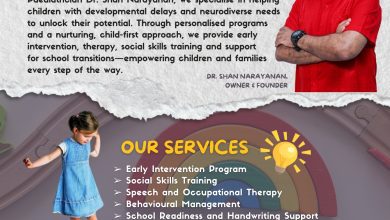

By Dr Saravana K.
Eosinophilic esophagitis is an allergic reaction in which the lining of your esophagus reacts to allergens, such as food or pollen. Eosinophils are a normal type of white blood cells present in your digestive tract, but in eosinophilic esophagitis they multiply in your esophagus. The eosinophils produce a protein that causes inflammation, which can lead to scarring, narrowing and formation of excessive fibrous tissue in the lining of your esophagus.
What are the symptoms of eosinophilic esophagitis?
Patients may experience symptoms such as heartburn, regurgitation, chest pain and difficulty swallowing. Adolescents and adults with eosinophilic esophagitis frequently complain of intermittent swallowing problems; infants and young children may develop feeding disorders leading to poor weight gain. In a small number of cases, eosinophilic esophagitis leads to the development of an extremely narrowed esophagus and occasionally food may get stuck in the esophagus and require emergency removal.
How is eosinophilic esophagitis diagnosed?
Currently, it is diagnosed by upper endoscopy and biopsy. The endoscopy sometimes reveals rings, white plaques (patches), or grooves in the esophagus. However, it may be present even if the esophagus looks normal. That is why biopsy samples are taken. Biopsy samples look for an overabundance of eosinophils in the esophageal tissue. Sometimes multiple biopsies may need to be taken.
People with eosinophilic esophagitis may also have food allergies, environmental allergies, asthma, atopic dermatitis or chronic respiratory disease.
You may be given some additional tests to confirm the diagnosis and to begin to look for the sources of your allergic reaction (allergens).
You may be given a blood test to look for higher than normal eosinophil counts or total immunoglobulin E (IgE) levels, suggesting allergy.
Medication trials. You may be given anti-reflux medication, specifically proton pump inhibitors (PPIs), to see if your symptoms improve. After 8 weeks, you will have a repeat endoscopy to see how healing has progressed.
Treatments and drugs
Eosinophilic esophagitis is considered a chronic relapsing disease, meaning that most people will require ongoing treatment to control their symptoms. Treatment will involve one or more of the following:
Dietary therapy
Depending on your response to tests for food allergies, your doctor may recommend that you stop eating certain foods, such as dairy or wheat products, to relieve your symptoms and reduce inflammation. A more limited diet is sometimes required. Your doctor may refer you to an allergist for specific recommendations.
Medication
Your doctor will likely first prescribe an acid blocker such as a PPI. This treatment is the easiest to use, but most people’s symptoms don’t improve. If you do not respond to the PPI, your doctor will then likely prescribe a topical steroid, such as fluticasone or budesonide, which is taken orally to treat eosinophilic esophagitis.
This type of steroid is not absorbed into the bloodstream, so you are unlikely to have the typical side effects often associated with steroids. If a topical steroid is not effective or you need more immediate symptom relief, you may be prescribed prednisone.
Steroids may decrease the buildup of eosinophils in the esophagus, reduce the inflammation associated with an allergic reaction, and allow your esophagus to heal. Some people may need to take steroids on an ongoing basis.
If you experience severe narrowing (strictures) of your esophagus, your doctor may recommend dilation to help make swallowing easier. Dilation may be used if steroids are not helpful.


